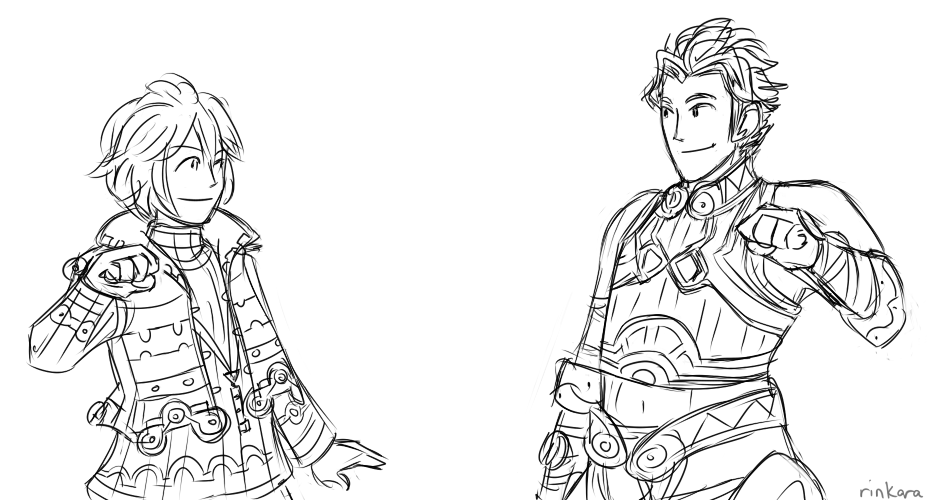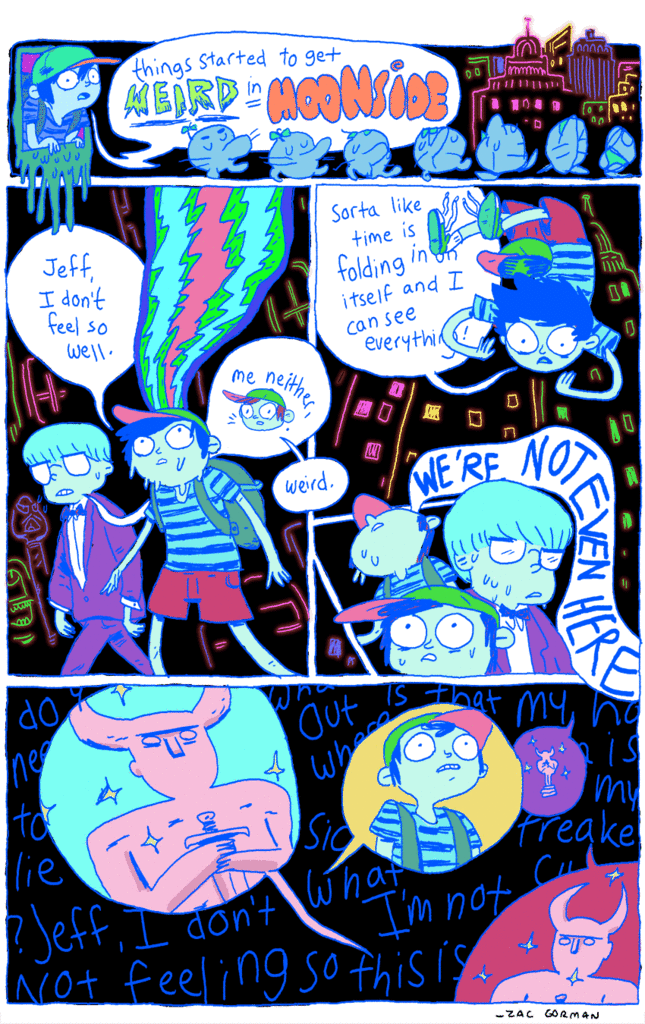So I’ve been playing Xenoblade Chronicles.
Reasons I’m glad I started Xenoblade Chronicles.
The setting. The game’s mythology is set up right from the get go in a very Ocarina of Time fashion. Two great beings fought and came to a standstill when they each struck the finishing blow on the other. As time passed, life sprung anew upon the body of each being.
Every once in a while, as you go from place to place, you’ll forget that the swamp or shoreside you’re running along is atop a giant dead thing until you come out onto some plateau that grants you a view of what appear to be wing-like rock formations against the blue sky, far out into the distance, even past the clouds.
By putting such an emphasis on draw distance that the Wii is mercifully capable of, the game’s story is able to work together with its technology to set expectations for all the places you’ll go. Most of the locations in the game are named after body parts, so you can come to your own conclusions about which parts may be able to sustain life. And when you look through pouring rain atop a cliff into the face of the OTHER giant, well, you know you’ll be getting personal with it later.
Characters wear what you equip them with.

Gem crafting. One of the more comforting things about Xenoblade is when you realize that the developers must have ditched the isolationist attitude of their friends at Square Enix and deigned to play a Western RPG. While I await the day that mission- and quest-based gameplay dissolves into something with more, eh, elegance I’ll say, traveling and questing is as seamless and painless as I’ve known it to be in a Japanese RPG.
Xenoblade is the only JRPG I have played for three hours, deviated from my original mission five times, and hadn’t noticed because I discovered so many interesting new things. It’s the kind of joy that’s mostly been relegated to Western RPGs – a world that is actually kind of nice to get lost in.
The ability to make gems best embodies the Japanese interpretation of Western design, and not just because it involves jamming precious magical stones into weaponry, which has always been awesome.
In a game like Skyrim, you have dozens of skills at your disposal, especially when it comes to creating and altering your equipment – blacksmithing, alchemy, enchanting, etc. If you want to get something done, you have your pick of what method to use.
In Xenoblade Chronicles, rather than being provided many options to do one thing, you are given one method with which to do many things. When you master the art of gem crafting, if you know what you want and have the materials to make it, it can be done.
This also ties in with another system that makes a lot of sense, which is your party’s affinity – that is, how well they get along with one another. The more characters spend time with and fight alongside each other, the more quickly their affinity proves, the better they’ll cooperate in battle, share each other’s skills, and improve their gem crafting.
I’d thank the Persona series’ Social Link mechanic for this particular inspiration, an exceedingly clever way to tie together combat, party management, and story.
Everyone’s British. It’s so nice to hear voice actors in a video game and not recognize any of them.

Reasons I think I’ll go back to playing Earthbound.
I want to be surprised. Even after 17 years, Earthbound still deviates from genre norms and defies expectations more than Xenoblade does.
Now, I don’t think cliches are a bad thing. I don’t talk about it too much, but one of my favorite RPG experiences was playing Wild Arms 4 for the first time.
The game is a walking monstrosity of cliches, with nearly every facet being taken whole from some other game which in turn was inspired by some anime. The result is a kind of beautifully stupid mosaic that is somehow truer than the sum of its parts. Cliches are cliche for a reason. Beneath every stereotype is an archetype, something primal and real that connects deeply to fears and cares that all people have.
Tons of video games have their young protagonists going on a coming-of-age journey. Wild Arms 4 was the first to actually make me reflect on my impending adulthood.
So when I started playing Xenoblade Chronicles, I didn’t mind too much that my huge best friend would be the tank or that the girl would be our healer, because the game is like, “This guy said he’d protect you no matter what, and this girl is a trained medic,” and I was like, “Okay, that makes sense.” What I saw was what I got, and I rolled with it.
Then I reached Alcamoth, on the head of the Bionis. If you played Chrono Trigger, this is kind of like the Zeal Kingdom of the game. Or for Xenogears, Solaris – a highly advanced place unlike any other up till this point which acts as an inevitable site for shattering plot revelations. (Director Tetsuya Takahashi worked on all three games, so he’s clearly strapped for ideas)
When it should feel like a destination, it actually just serves as a road block to the place you really want to get to: Prison Island. But you have to get the king’s permission to get there, which means to have to save his daughter, which means you have to prove your worth, et cetera, et cetera.
Up until now, the game has been pretty straight forward. Nothing has been lingered on, cut scenes have been pretty quick and unobtrusive (here’s a problem; here’s where we come in; here’s how it’s resolved). Cliche plot points really haven’t been an issue because they’re treated like building blocks for the game – not especially artful, but useful for founding objectives and challenges upon.
When the game reaches Alcamoth, it starts presenting its cliches as though they aren’t cliches. This is the point at which I remembered, “Oh yeah, this was the same developer responsible for Xenosaga.”
Hey, remember how we’re on a sworn mission to gain revenge on those horrible machines that tried to murder us? Well, forget about that for now. How about instead of all that stuff you’ve been looking forward to, we have several back-to-back cut scenes detailing the political machinations of people you haven’t even met before? Looks like there’s a lot of dirty dealing going on concerning things I don’t even really understand! I wonder who’s behind it all? Maybe it’s the person who looks and sounds like they’re behind it all?
[There’s a sudden influx of really unclever cut scenes at this point, just when my roommates decided to start paying attention as I play the game. I felt almost as bad as when my dad walked in on me playing Final Fantasy X-2.]
Like, why all the ceremony? Why all the pomp and circumstance when I KNOW what’s going to happen? I’ve played a lot of games, Takahashi! A bunch of them were games YOU made!!
Nothing surprising happens. Nobody changes. Good people are good and bad people are bad. Everyone looks and sounds like exactly the sort of people they are.
Now I WILL admit that, once I got to Prison Island, things vastly improved. I got to go some place that looked cool, I got to beat big things up, and the ensuing scenes provided a good balance of questions, answers, and warnings of bigger things.
But now I’m really worried that things are going to get worse as time goes on. I’d be willing to suffer a dumbening story if I knew the challenges would improve, but frankly the game’s been getting easier and the boss fights haven’t required too much strategizing. Even gem crafting is becoming a process of 1) boosting Agility and 2) tossing everything else.
I think a break’ll do me good. Keep the magic of Bionis alive.




